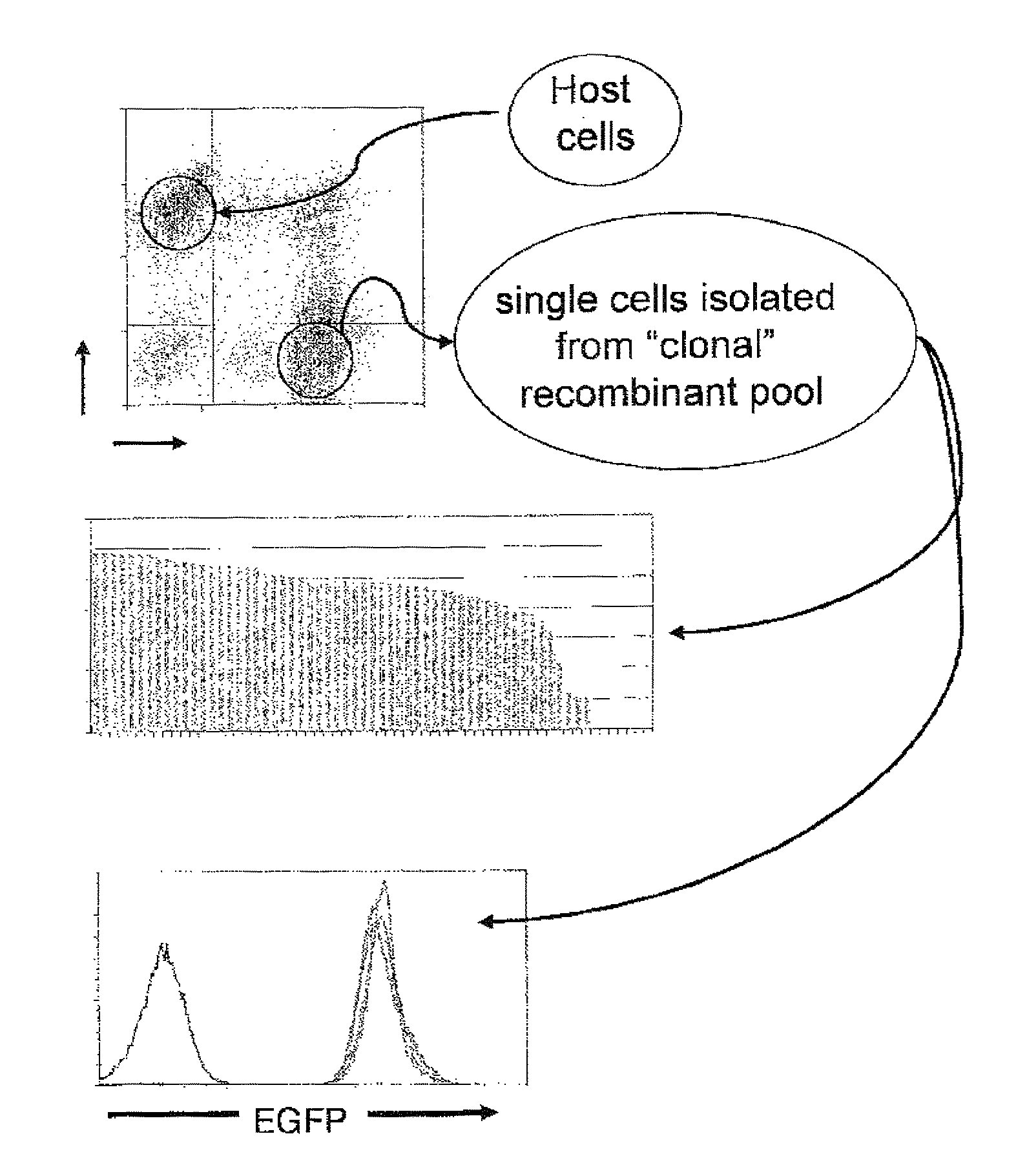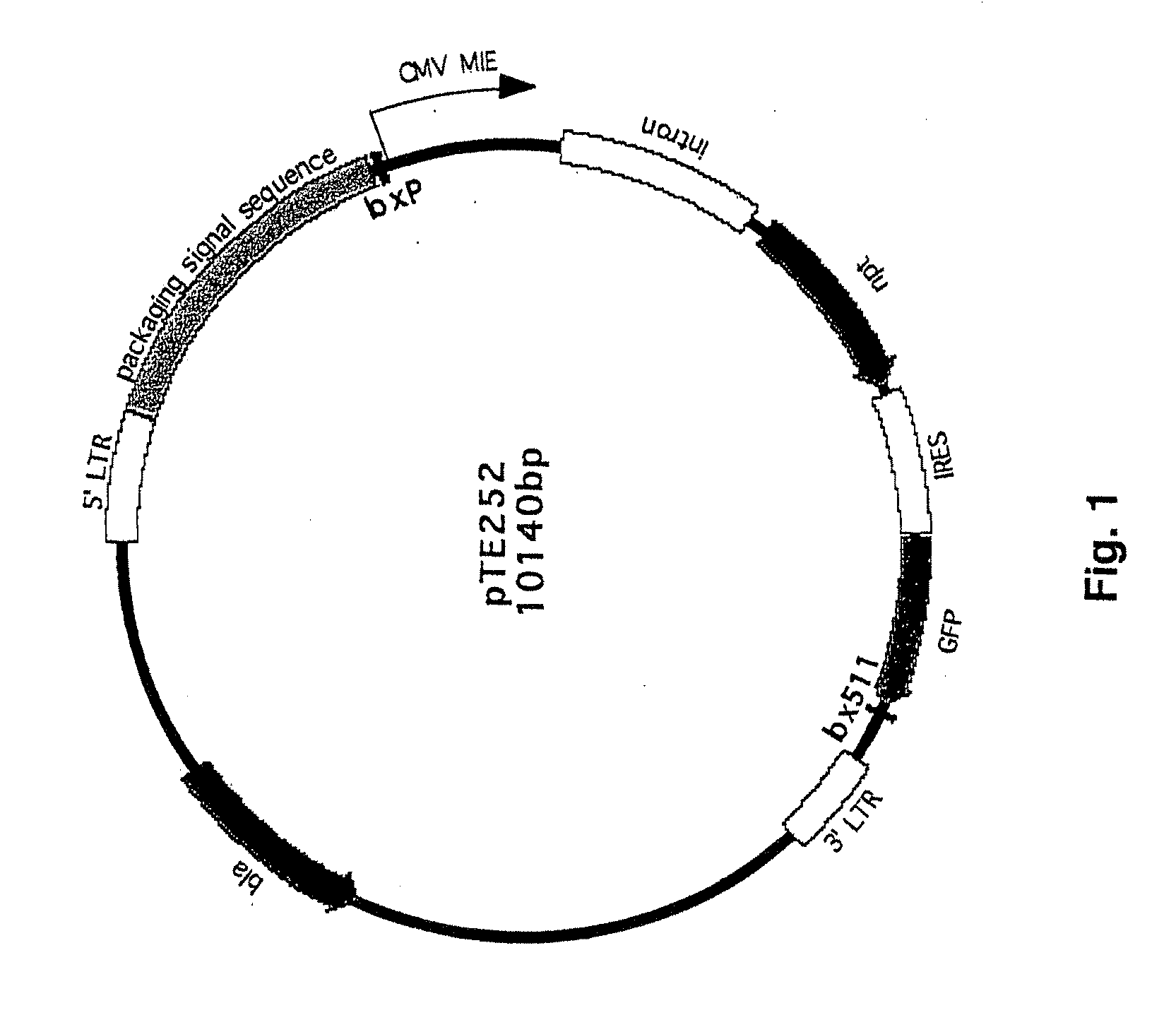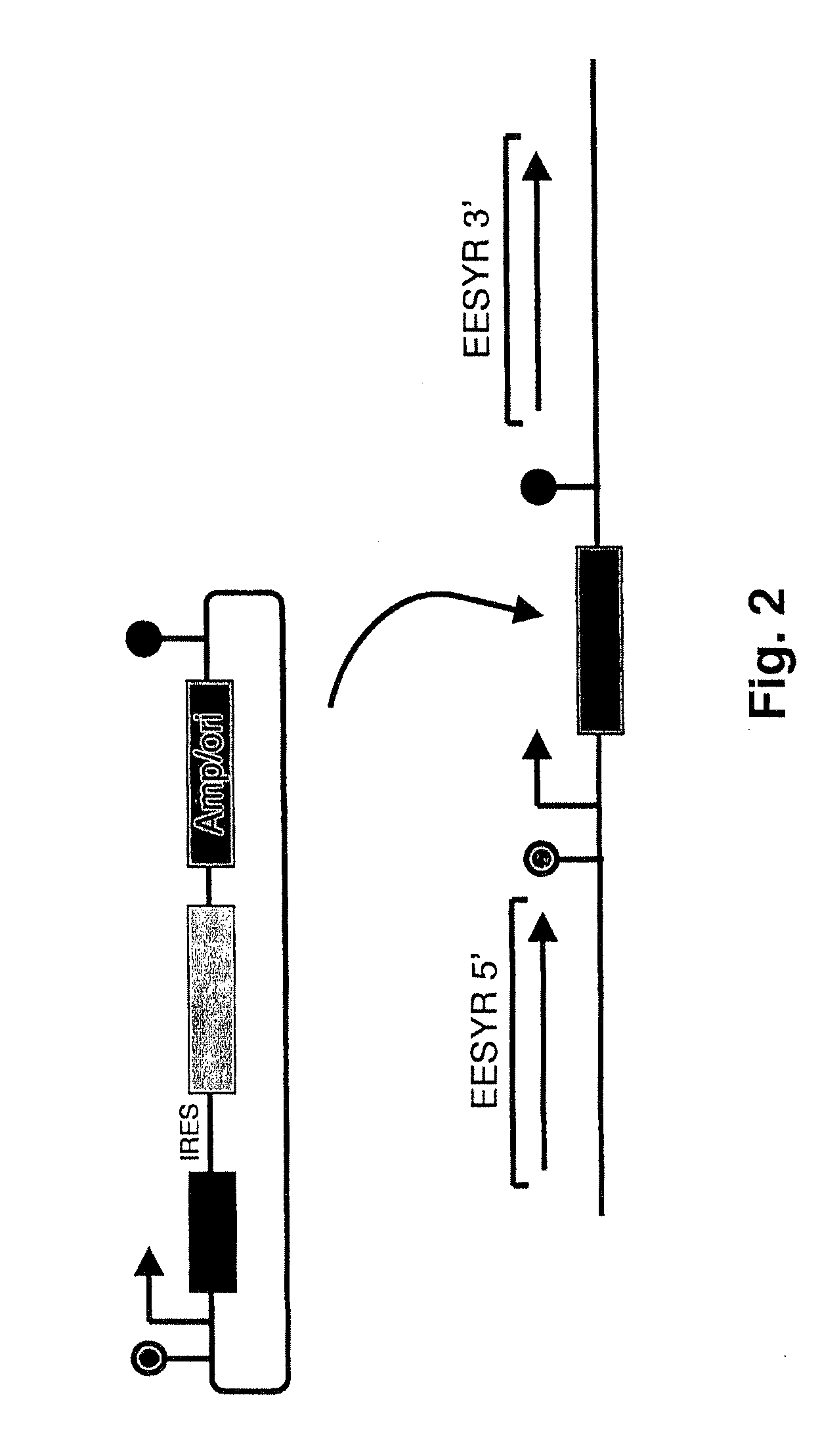Enhanced expression and stability regions
a technology of enhanced expression and stability region, which is applied in the direction of peptides, immunoglobulins, viruses/bacteriophages, etc., can solve the problems of unsatisfactory or unacceptable low expression of a recombinant protein in mammalian systems, and the development of cell lines that reliably express enough of a desired protein often requires time-consuming cloning and amplification steps
- Summary
- Abstract
- Description
- Claims
- Application Information
AI Technical Summary
Benefits of technology
Problems solved by technology
Method used
Image
Examples
example 1
Generation of RGC9 and RGC16 Cell Lines
[0125]CHO K1 cells (1×107) were infected with pantropic retrovirus produced with plasmid pTE252 (FIG. 1), having a lox p site in it, at an MOI of less than 1 to generate a stable pool of cells with mostly one retroviral insertion per cell. Cells in the stable pool that expressed a marker protein at a high level were selected and expanded. Selection rounds were conducted to identify cell populations capable of enhanced expression. Thirty-six clones were isolated and expanded into 36 cell lines. Clones exhibiting the highest recombination efficiency were identified and cloned, wherein the clones each contained at least one recombinase recognition site in an enhanced expression locus. Eight cell populations with the best recombination efficiency were selected, and reassessed for enhanced protein expression. Two cell populations were selected and designated RGC9 and RGC16. Southern blot analysis of the cell populations from the original 36 cell lin...
example 2
Expression of FcFP1 Protein in Serum-Free Production Medium
[0126]RGC38 cells were derived from RGC9 cells and were adapted to grow in suspension in a serum-free production medium. RGC38 cells were used as host cells for the expression of FcFP1 protein (Fc fusion protein-1). RGC38 cells were transfected in a ten-centimeter plate with a FcFP1 expression vector, pTE851 and a Cre plasmid, pRG858. The FcFP1 plasmid has, in 5′ to 3′ direction, a LoxP site, a SV40 late promoter, a hygromycin resistant gene, an IRES, an eGFP, a CMV MIE promoter, a gene encoding a FcFP1 protein, and a Lox511 site. Cells were cultured in F12 medium with 400 μg / ml hygromycin for two weeks after transfection. Cells expressing eGFP but not DsRed were isolated using flow cytometry and designated as RS421-1. Isolated cells were essentially isogenic, though derived from different founder cells. RS421-1 cells were expanded in suspension cultures in serum-free production medium. FcP1 protein in conditioned medium of ...
example 3
Regulated Expression of FcFP1 Protein in Serum-Free Production Medium
[0127]RGC49 cells were derived from RGC16, were adapted to grow in serum-free production medium, and contained a stably integrated tetR-YFP expression plasmid, pcDNA6 / TR. The tetR protein allows regulation of transcription from promoters that comprise a tet operator sequence by tetracycline or doxycycline. RGC49 cells were co-transfected with pTE851 and pRG858. The transfected cells were selected with 400 μg / ml hygromycin for two weeks. Cells expressing eGFP but not YFP were isolated using flow cytometry and designated as RS569-1. RS569-1 cells were expanded in suspension cultures in serum-free production medium in the presence or absence of doxycycline. FcP1 protein in conditioned medium of 3-day old cultures was examined by SDS-PAGE and Coomassie blue staining. The RS569-1 cells expressed FcFP1 protein similarly to RS421-1 upon in the presence of 1 μg / ml doxycycline in the culture medium. Very little FcFP1 protei...
PUM
 Login to View More
Login to View More Abstract
Description
Claims
Application Information
 Login to View More
Login to View More - R&D
- Intellectual Property
- Life Sciences
- Materials
- Tech Scout
- Unparalleled Data Quality
- Higher Quality Content
- 60% Fewer Hallucinations
Browse by: Latest US Patents, China's latest patents, Technical Efficacy Thesaurus, Application Domain, Technology Topic, Popular Technical Reports.
© 2025 PatSnap. All rights reserved.Legal|Privacy policy|Modern Slavery Act Transparency Statement|Sitemap|About US| Contact US: help@patsnap.com



